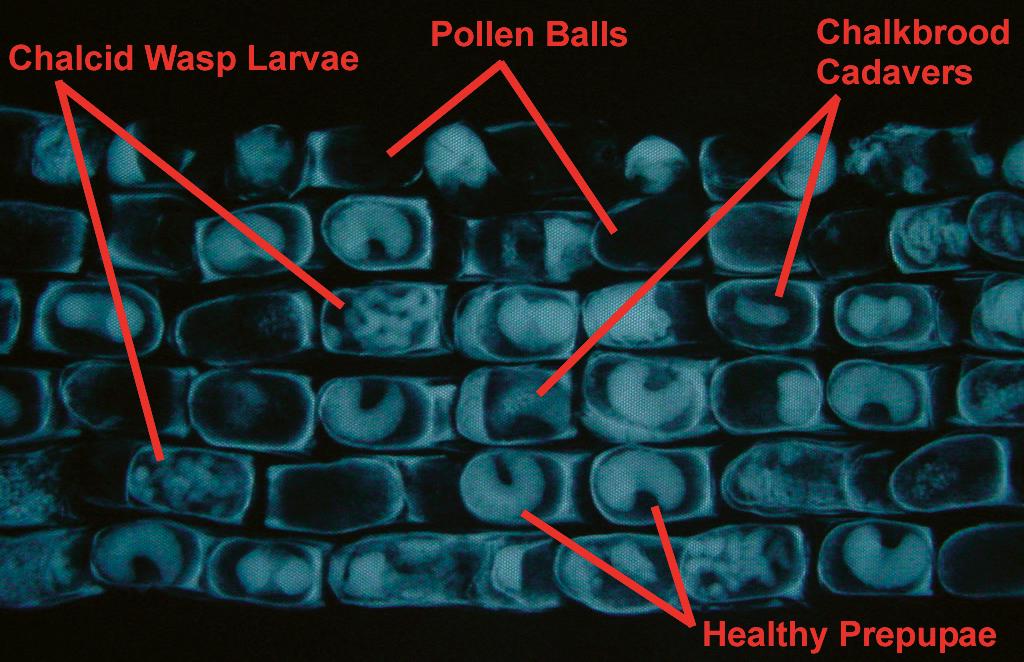Eric Mader, Pollinator Outreach Coordinator, the Xerces Society for Invertebrate Conservation
Inspection of dormant cavity-nesting bees and bee larvae is a difficult process. For example, dormant adult mason bees inside reed or cardboard nest tubes cannot be inspected without splitting the tube lengthwise. Once revealed, the cocoons themselves often provide few clues as to the condition of the bees within. Loose cocoons must be sacrificed to dissection via scalpel.

Similarly, leafcutter prepupae are difficult to examine within their individual leaf cells. The presence of chalkbrood-infested individuals, parasites, and “pollen balls”—dud cells containing no live bee—can be a challenge to ascertain.
Fortunately, X-ray analysis can provide an effective way to check the condition of immature bees without requiring dissection, surgical tools, or a microscope. Performed properly, X-ray inspection is not harmful to bees, and does not require the disassembly of individual mason bee nest tubes. However, bees nesting in drilled block-type nests must be removed so that individual cocoons or leafcutter cells can be examined.
Standard mammography or industrial X-ray machines like the cabinet-type Hewlett-Packard Faxitron model 43804n (or model 43855A) are currently used by labs performing analysis of leafcutter bees. Local veterinarians may also have suitable equipment.
Voltage settings of 20 to 25 Kv with a current of 2.0 ma for 30 to 60 seconds on medium grain industrial film (such as Kodak Industrex M) provide good images of dormant mason bees (within natal nest tubes) and individual leafcutter larvae.
When viewed during larval development stages, sampled bees should be a consistent size and shape (Figure B.1). Most types of parasites and nest destroyers should be readily apparent upon inspection. Dormant adult mason bees, such as BOBs, should have a white abdomen in fall and winter indicating stored fat reserves. Black abdomens indicate depleted energy that may have resulted from bees being stored in overly warm conditions (greater than 40°F, ~5°C).
